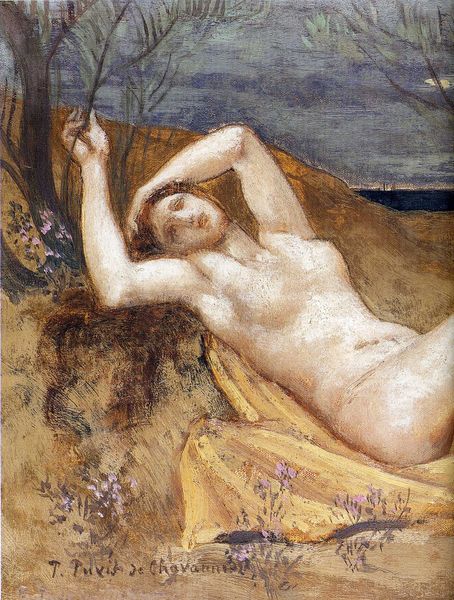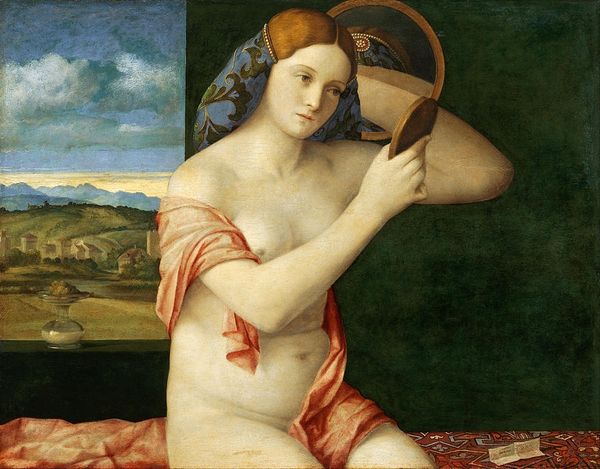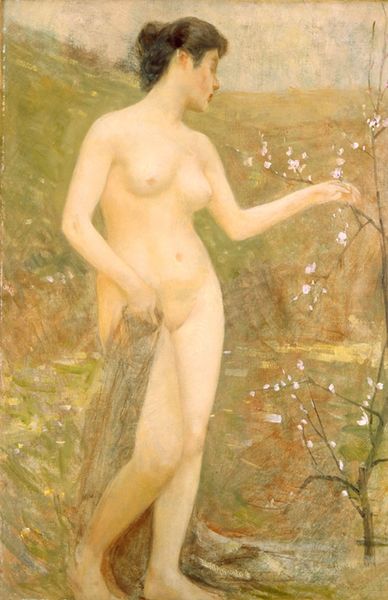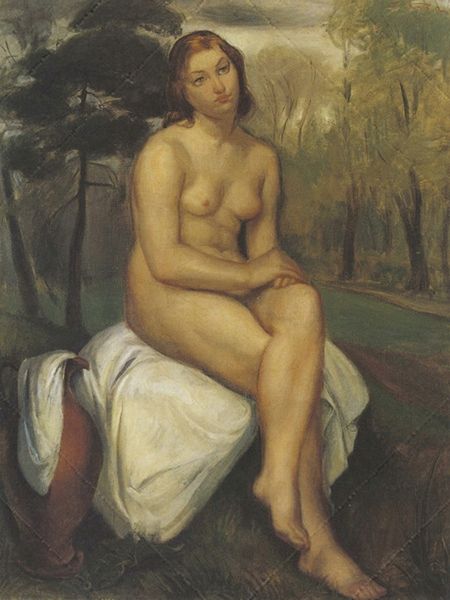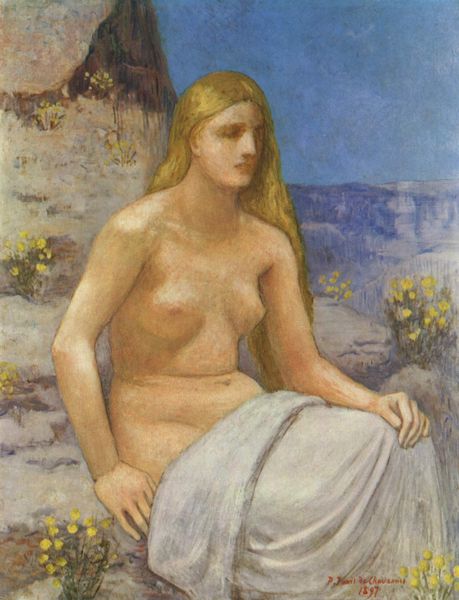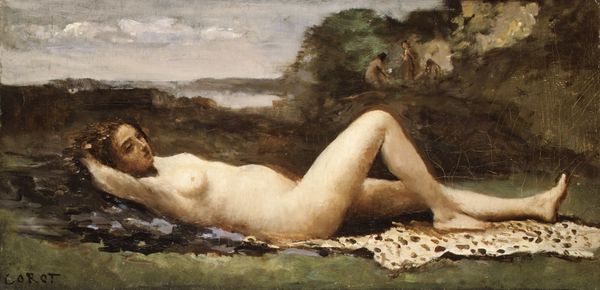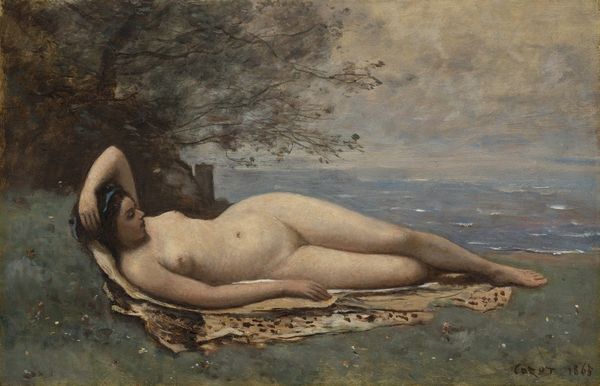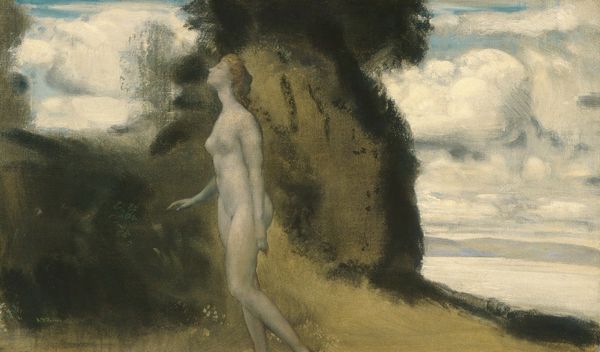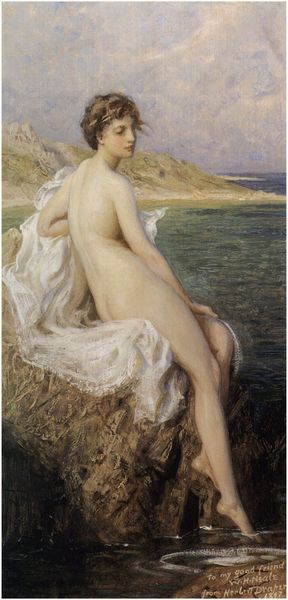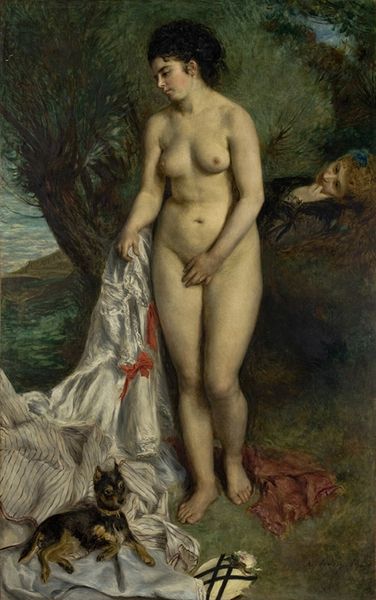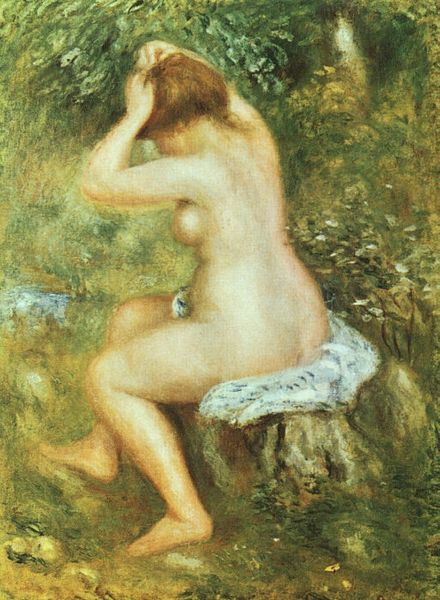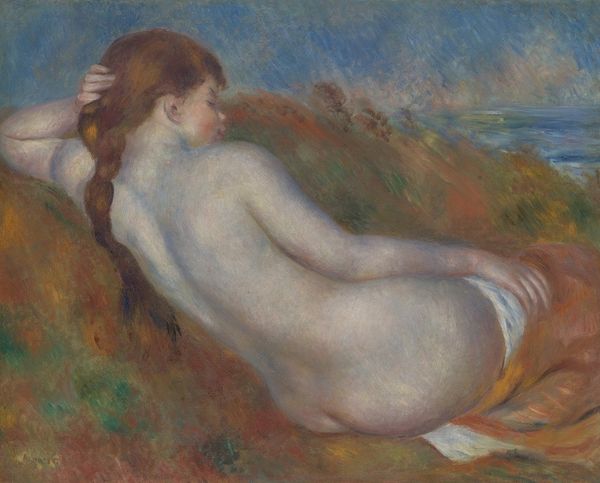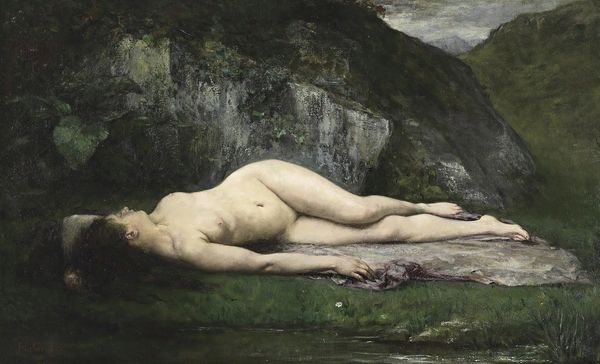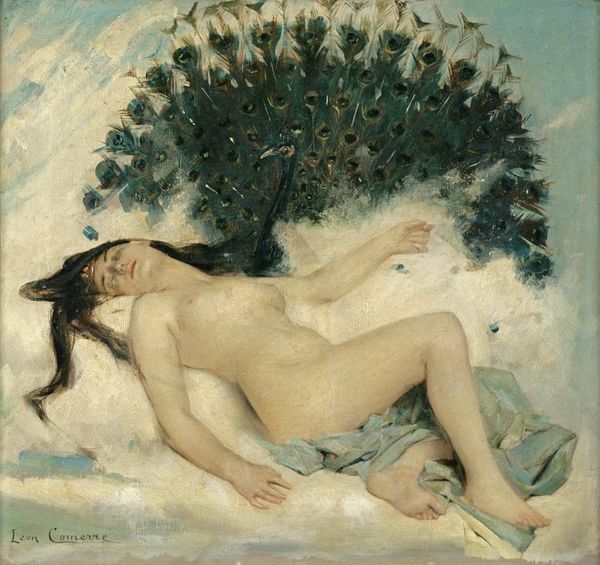
Copyright: Public domain
Editor: This is "Hope" painted by Pierre Puvis de Chavannes in 1872, currently housed at the Musée d'Orsay. It looks like an oil painting with muted colours, featuring a nude figure reclining in a desolate landscape holding a small branch. There's a real contrast between the bleak surroundings and the symbol of new life she's holding. What stands out to you about this work? Curator: Considering this work from a materialist perspective, I'm drawn to the relationship between the depicted materials and the social context of its production. The artist meticulously renders the textures of the crumbling landscape and the smoothness of the figure's skin with oil paints, a medium then associated with high art. However, the subject matter — a nude figure amidst ruins – and the implied labor raise questions about how hope itself becomes a commodity in post-war France. Editor: That’s a really interesting point about hope as a commodity! Could you elaborate on how the materials used relate to the concept of labor within this artwork? Curator: Certainly. The use of oil paint, demanding considerable skill and time, suggests a certain level of economic privilege on the part of the artist and those who consumed his work. It’s important to question if the landscape symbolizes, on a material level, an exhaustion of resources post-war? In this interpretation, is the figure "Hope" just a visual, material representation of an unobtainable concept? What if this artwork wasn't presented via painting but instead in some material accessible to the working class at this time? Editor: I see what you mean. Presenting hope using rare materials feels contradictory. The very process contradicts the subject matter! I had never thought of it that way, seeing art as almost… labor. Curator: Precisely. By looking at the process, the materials, we expose potential contradictions and societal conditions deeply embedded within art itself. That new awareness is invaluable. Editor: Thank you; I'll definitely consider the materials and processes when looking at art in the future, especially in the context of when and where it was created.
Comments
No comments
Be the first to comment and join the conversation on the ultimate creative platform.
